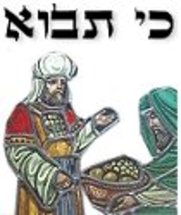Shabbat: Parsha Ha'azinu
Shabbat Shalom and welcome to Judeo Talk. The Torah portion for this week is Parsha Ha'azinu, Deuteronomy 32:1-32:52.
This week, we read from the penultimate parsha in the Tanakh, the Five Books of Moses. Ha'azinu is a poem, the second to last poem he ever recited. It is, without a doubt, a piece meant to literally put the fear of God in his people. But we can't look at the verse of Ha'azinu as a stand-alone piece. Indeed, the last thing Moses ever does before he dies in next week's parsha is speak a blessing over the Israelites. Anyone who has spent a decent amount of time studying Torah should know that this order of events is significant. The fear is not the last word, but the blessing.





